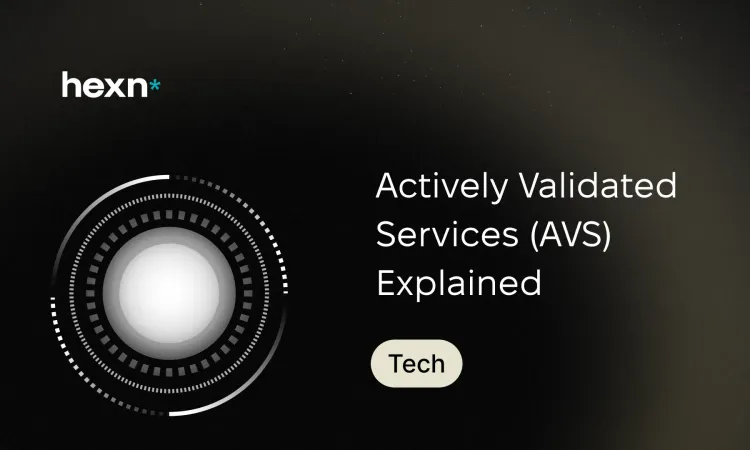Actively Validated Services (AVS) Explained
What are Actively Validated Services (AVS)?
Actively Validated Services (AVS) are systems that use continuous checks, automated tests, and real-time monitoring to keep digital services working securely and reliably. In fast-moving fields like crypto and fintech, AVS reduce downtime, catch vulnerabilities early, and help maintain trust for users and partners.
Core Characteristics of Actively Validated Services
AVS differs from traditional, periodic reviews by applying constant validation. The main advantages include faster detection of faults and structured processes for handling issues before they affect customers.
- Continuous monitoring: Systems are watched in real time to spot performance drops, resource strain, or unusual activity.
- Automated validation: Scripts and tools run routine checks, functional tests, and security tests without manual intervention.
- Proactive fault detection: Issues are flagged early so teams can fix them before they escalate.
- Stronger security posture: Regular checks reduce the window of exposure for vulnerabilities.
- Higher reliability and performance: Ongoing validation helps meet SLAs and delivers a more consistent user experience.
- Auditability and compliance: Continuous records make it easier to demonstrate adherence to regulations.
- Increased user confidence: Transparent validation processes improve trust in services.
How AVS Operate
Putting AVS in place involves several technical and organizational elements working together to maintain service health.
Real-time Monitoring and Observability
At the foundation, observability tools collect metrics, logs, and traces to show how systems behave. These feeds help spot anomalies in traffic, latency, or resource usage as they happen.
Automated Testing and Validation Pipelines
Automated tests simulate user flows and attack scenarios on a regular cadence. These checks can be simple health probes or rigorous security assessments designed to validate that components meet expected standards.
Anomaly Detection and Intelligent Alerts
Machine learning models and rule-based systems analyze telemetry to identify deviations from normal patterns. When something unusual appears, alerts are raised with contextual information to speed up troubleshooting.
Incident Response and Automated Mitigation
Once an issue is detected, predefined runbooks guide the response. In many AVS implementations, automated actions—such as rolling back a deployment or isolating a misbehaving node—can be executed immediately to limit impact.
Why AVS Matter for Blockchain and Decentralized Services
Blockchains already rely on ongoing validation of transactions and state, but AVS extend that concept to operational and security monitoring across services built on top of the chain. The result is better uptime, fewer upgrade-induced regressions, and clearer evidence of compliance.
Continuous Integrity Checks
Nodes and validators perform constant verification of blocks and transactions to keep the ledger consistent. AVS add environmental and behavioral checks that confirm supporting services are operating correctly.
Stronger Defense Against Attacks
Decentralized networks benefit from AVS because continuous validation and monitoring can reveal attempts to manipulate consensus or exploit software vulnerabilities, allowing defenders to respond earlier.
Operational Stability and Performance Gains
With AVS, teams can identify bottlenecks and inefficiencies faster, reducing the chance that network changes introduce performance regressions or downtime.
Compliance Readiness
As crypto infrastructure intersects with regulated sectors, AVS produce the audit trails and evidence needed to satisfy regulatory and governance requirements.
How AVS are Applied in Restaking and Shared-Security Projects
Some blockchain projects let participants reuse staked assets to secure multiple services at once. In these systems, AVS play a central role by continuously validating validator behavior, tracking performance, and enforcing rules through incentives and penalties.
Validators are monitored for correctness and availability. Rewards are paid for meeting standards, while misbehavior or poor performance can lead to penalties on staked assets. This combination of monitoring and economic alignment encourages reliable operation across the ecosystem.
Practical Benefits and Considerations Before Adopting AVS
Organizations looking to implement AVS should weigh both the technical gains and operational costs. Key benefits include reduced incident impact, better security posture, and improved user trust. Considerations include the overhead of building monitoring and testing infrastructure, data privacy implications, and the need for clear governance around automated actions.
Key Takeaways
Actively Validated Services bring a proactive, automated approach to service reliability and security. For teams building on distributed ledgers or offering financial services, AVS help detect problems early, enforce standards across participants, and create a stronger, more auditable foundation for growth.
